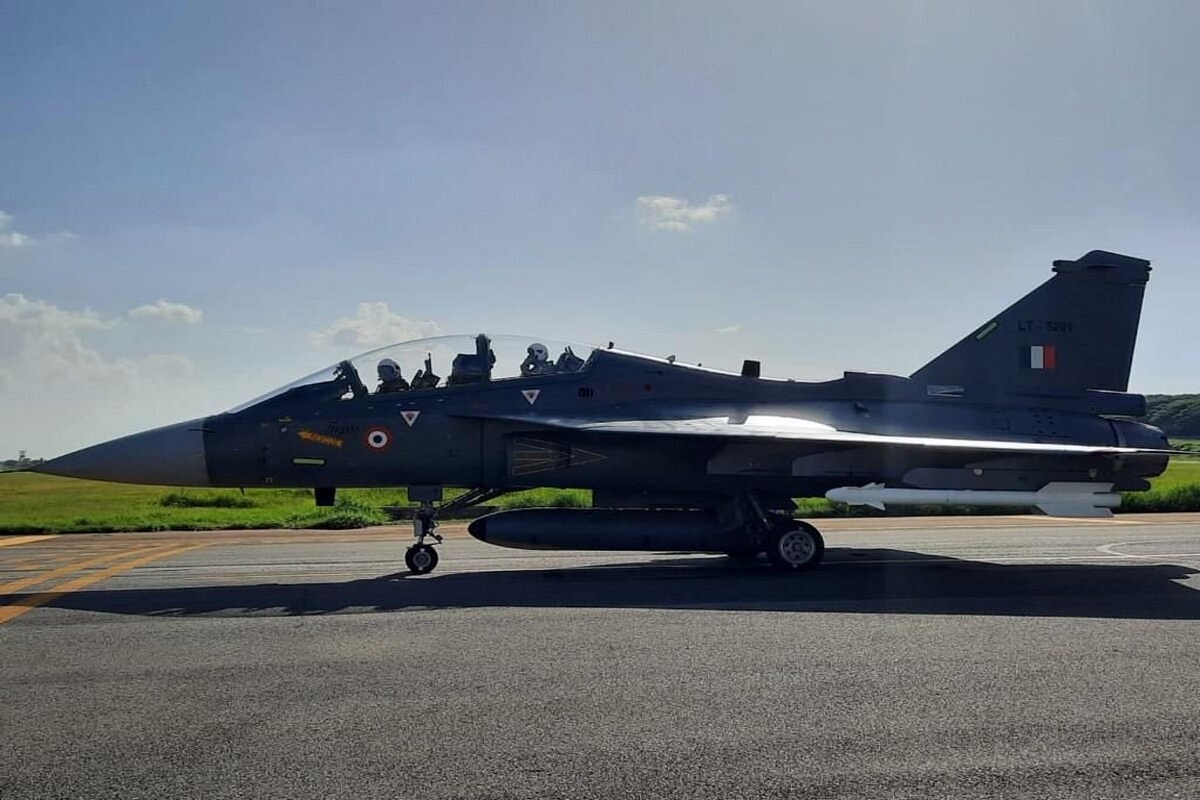Defence
Tejas Mk-1A, That IAF Will Induct In March Next Year, Will Be Deployed At Nal Airbase In Rajasthan Opposite Pakistan

Side view of Tejas Mk-1A series production trainer aircraft. (Image via X/@livefist)
India's indigenous light combat aircraft (LCA), the Tejas Mark 1A, is set to be stationed at the Nal Air Force Base (AFB) in Bikaner, Rajasthan, close to the Pakistan border.
The Indian Air Force (IAF) has recently been granted approval for purchase of an additional 97 Tejas Mk-1A, for a total of 180 jets. It is expected that the first Tejas Mk-1A will be delivered to the IAF by February or March, next year.
Air Chief Marshal (ACM) VR Chaudhari, the Chief of Air Staff, has described this as a "landmark event."
Chaudhari highlighted that the IAF already possesses 40 LCAs from the earlier batches with initial operational clearance (IOC) and final operational clearance (FOC).
With the addition of the Tejas Mark 1A, the IAF's fleet will eventually include 220 of these aircraft, forming almost ten squadrons, he said.
"We already had 40 LCAs of the original IOC and FOC version. So with this, in the long run, the strength of the IAF will grow to 220 LCA Mark 1As, which will equip almost ten squadrons of the IAF," the Chief said.
The ACM also emphasised that the Tejas Mark 1A is an ideal replacement for the aging fleet of MiG 21 jets.
"The Tejas Mark 1A is a very capable and potent aircraft and it gives our trust in the Indian defence industry capabilities. It shows that we firmly are committed towards Aatmanirbhar Bharat (self-reliant India) and ensuring that a large number of our items on our inventory are made in India," the Air Chief said.
The indigenously designed, and developed, Tejas Mk-1A features over 65 percent made-in-India components. It comes with around 40 major and minor improvements over Mark 1.
These improvements include the DRDO-developed Uttam active electronically scanned array (AESA) radar, which greatly increases target detection range and resistance against jamming. Improvements also include faster turnaround time after each sortie.
Support Swarajya's 50 Ground Reports Project & Sponsor A Story
Every general election Swarajya does a 50 ground reports project.
Aimed only at serious readers and those who appreciate the nuances of political undercurrents, the project provides a sense of India's electoral landscape. As you know, these reports are produced after considerable investment of travel, time and effort on the ground.
This time too we've kicked off the project in style and have covered over 30 constituencies already. If you're someone who appreciates such work and have enjoyed our coverage please consider sponsoring a ground report for just Rs 2999 to Rs 19,999 - it goes a long way in helping us produce more quality reportage.
You can also back this project by becoming a subscriber for as little as Rs 999 - so do click on this links and choose a plan that suits you and back us.
Click below to contribute.
Latest